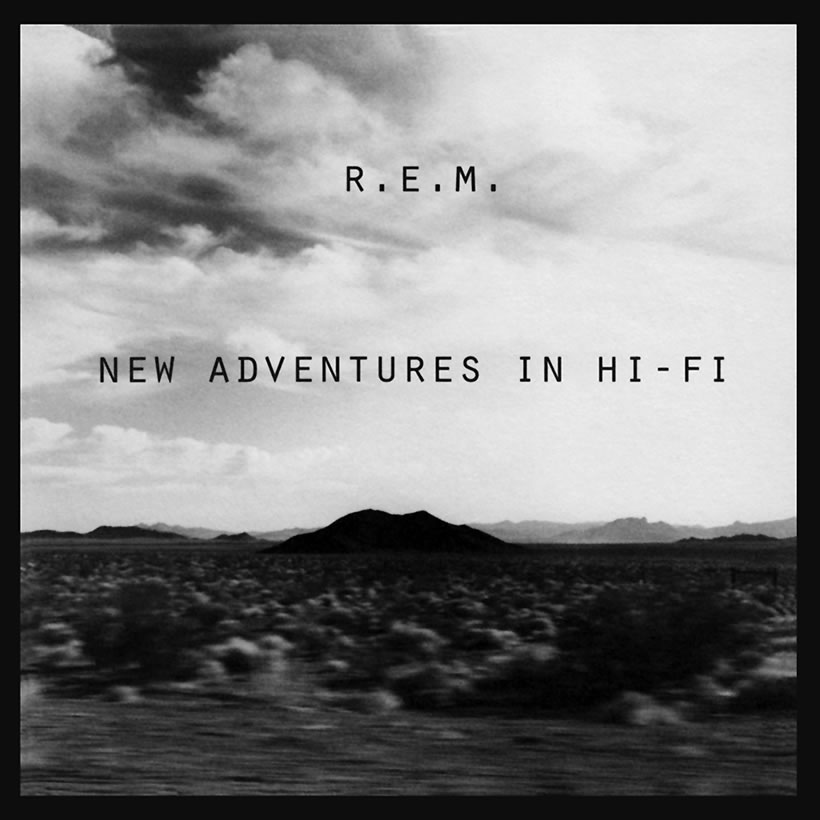Following the release of 1994’s multi-million-selling Monster, R.E.M. returned to the road for the first time since the grueling year-long trek in support of 1988’s Green. One of the industry’s most enviable (and reputedly highest-grossing) tours of the year, it consisted of well over 100 shows across three continents, with the arena-sized bills also boasting of a variety of high-profile support acts including Radiohead, Sonic Youth, and Grant Lee Buffalo.
On paper, the itinerary appeared daunting enough, but it didn’t prepare anyone for the string of potentially life-threatening medical emergencies which would befall the band during the campaign. Most famously, Bill Berry was diagnosed with a brain aneurysm when the tour swung through Lausanne, Switzerland, though Mike Mills also later required abdominal surgery to remove an intestinal adhesion during further European dates in July, and Michael Stipe was forced into emergency surgery to repair a hernia: this latter procedure somehow taking place without the need to postpone any of the scheduled shows.
Listen to the deluxe 25th Anniversary edition of New Adventures In Hi-Fi.
Astonishingly, the band was arguably at their most creative while they were riding out these vicissitudes. Inspired by both Radiohead’s decision to record some of the basic tracks for The Bends while on tour, and Neil Young’s chaotic, but frequently brilliant live LP of all-new material Time Fades Away (1973), R.E.M. decided to take eight-track recording decks out on the road with them. Employing these machines to capture the new songs then being worked up, the group also feverishly recorded their live shows, soundchecks, and even informal dressing room jams – the latter method eventually yielding the official recording of the swaying, surfy instrumental “Zither.”
These live recordings comprised the bulk of the material for the band’s 10th LP, New Adventures In Hi-Fi, released in September 1996. However, the record was hardly a standard “live” LP, as all the material was freshly composed and further expanded by a quartet of songs laid down during a fruitful post-tour session at Seattle’s Bad Animals studio.
“We got into the studio feeling very happy and relieved that everyone was OK, especially Bill,” said Mike Mills during an interview with UK rock monthly Mojo, in November 1996. “It brought us all much closer and made us realize how important we are to each other. Once we’d been through a crisis like that, making a record was a piece of cake. We discussed making an album of on-the-road stuff a year and a half before we went on the Monster tour. We wanted to get some of the looseness and spontaneity of a soundcheck, live show, or dressing room.”
Issued on September 9, 1996, New Adventures In Hi-Fi debuted at No.2 on the US Billboard 200 and shot straight to No.1 in the UK. In addition, the LP spawned a trio of Top 30 hits in the UK – including an impressive No.4 placing for the record’s first single, “E-Bow The Letter” – and eventually sold over five million copies worldwide. However, despite these not insubstantial returns and a series of enthusiastic reviews (including a five-star write-up in Q, four-and-a-half stars from Rolling Stone’s Mike Kemp, and a four-star notice from highly respected Los Angeles Times music critic Robert Hilburn), New Adventures… has never had quite the same hip cachet as R.E.M.’s highly acclaimed early 90s touchstones Out Of Time and Automatic For The People.
Arguably less immediate and less accessible than those landmark LPs, New Adventures… was a sprawling, “White Album”-esque affair clocking in at 65 minutes. However, while it required some time and commitment from the listener, the record’s contents were rich, compelling, and frequently stunning. Accordingly, the album has continued to lobby for recognition and has long since earned its reputation as R.E.M.’s most unsung LP.
Volatile and eclectic, the music within took off in myriad directions. Culled from the Seattle studio session, the grizzled but glorious opening track, “How The West Was Won And Where It Got Us,” found an unusually world-weary Stipe intoning, “This story is a sad one, told many times,” over Berry’s loping beat and an Ennio Morricone-esque baritone guitar motif from Buck, while the sparse “Be Mine” and grainy, melancholic “E-Bow The Letter” (wherein Stipe duetted with his long-time heroine Patti Smith) also carried echoes of Automatic For The People’s somber pastoral folk. The final studio-sourced track, the plaintive “New Test Leper,” meanwhile, found Stipe questioning religious faith, with the title being shorthand for The Bible’s “New Testament” and how its veracity perhaps ought to be tested.
Cleaned up a tad during Scott Litt’s discreet post-production, the remaining three-quarters of New Adventures… was lifted from either fully-fledged live and/or soundcheck performances from a variety of US dates during the group’s mammoth 1995 tour. Much of the material continued in Monster’s garage-rock vein, though the stage performances were further beefed-up with R.E.M.’s four core members augmented by two additional multi-instrumentalists, Scott McCaughey and Goo Goo Dolls’ Nathan December.
Perhaps a more likely LP opener than the lugubrious “How The West Was Won And Where It Got Us,” the wham-bam-thank-you-mam glam-stomp of “The Wake-Up Bomb” was peppered with snarky references to fame and glitzy pop culture, Stipe revealing how he should “practice my T.Rex moves to make the scene” and referencing Oasis’ first hit “Supersonic,” before delivering the sour kiss-off line: “See ya – I don’t wanna be ya.”
This idea of eschewing the trappings of fame frequently recurred throughout New Adventures… with Stipe admitting, “I’d rather chew my leg off than be trapped in this,” during the otherwise bracing “Bittersweet Me,” and declaring, “I’m leaving… leaving it all behind,” on “Leave.” Arguably the record’s most quixotic track, this latter opened with thoughtful acoustic guitar and Neil Young-esque pump organ before morphing into a wracked full-band lament punctuated by McCaughey’s squalling, car alarm-style synth motif.
New Adventures… rarely took its foot off the gas, but the album was arguably at its most transcendent during its breathtaking home straight, taking in the thrilling, amphetamine-strength rush of “So Fast, So Numb” and the vivid, cinematic “Low Desert,” with the latter’s fork-tongued slide guitar and parched atmosphere coming on like an aural representation of the arid, black-and-white landscape adorning the album’s cover. The record’s stone classic, however, was the closing “Electrolite”: Michael Stipe’s emotional tribute to Hollywood icons and a moving farewell to the 20th Century all rolled into one, framed by Mike Mills’ elegant piano figures and one of the band’s most gloriously restrained performances.
Rolling Stone’s review of the restless New Adventures… cogently suggested that the record “could be R.E.M’s swansong – or the first day of the rest of their lives”, while a number of critics picked up the fact that “Electrolite” wound down with Michael Stipe pointedly intoning: “I’m not scared… I’m outta here,” interpreting this to mean that his days with R.E.M. may have been numbered.
As it turned out, Stipe had no intention of breaking away from the fold, but things nonetheless changed dramatically within the R.E.M. camp following the album’s release. The band parted ways with their manager Jefferson Holt (his position being filled by their long-time legal adviser, Bertis Downs IV). And then Bill Berry dropped a bombshell. He informed his colleagues that he was going to quit just as the sessions for the band’s next LP were due to begin, in October 1997.
Reputedly not a decision taken lightly, Berry’s departure came after months of soul-searching and lengthy discussions with Mike Mills and Bertis Downs, but his devastating news left this most harmonious of groups in a quandary. R.E.M. had, after all, run on democratic lines from the day the band formed, and they had previously stated they would split if one member left.
In the end, however, Berry told his bandmates that he would not quit if they decided to split as a result of him leaving, so Buck, Mills, and Stipe eventually decided to continue as a three-piece, with Berry’s blessing. It may not have been the end of the world, but it was most certainly the end of R.E.M. as we knew them, and the band would be forced to undergo a period of reinvention before they re-emerged with 1998’s Up.
Listen to the best of R.E.M. on Apple Music and Spotify.




